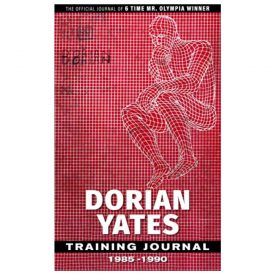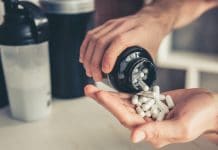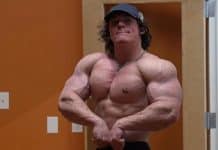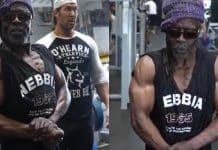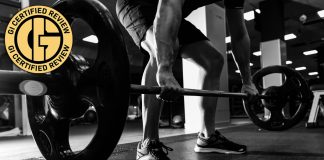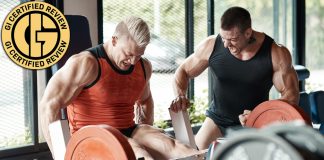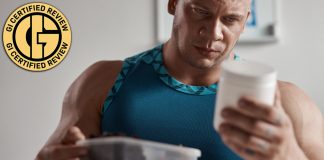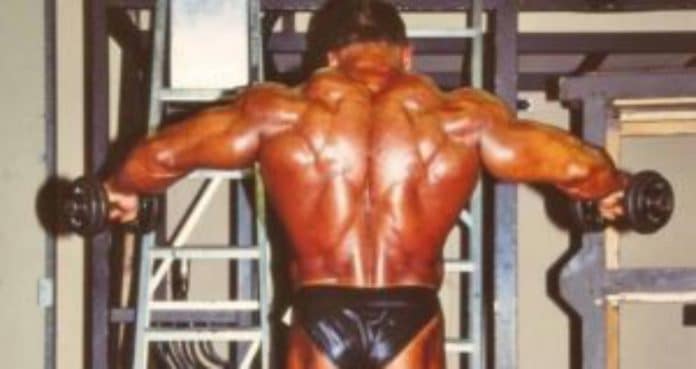
Dorian Yates says hanging from a bar is the best shoulder protection exercise.
Shoulder pain is a common issue among bodybuilders and athletes, particularly when engaging in chest or shoulder training overhead exercises. Often, this pain stems from not adequately training the rotator cuff, leading to imbalances, stability problems, weaknesses, and, if neglected, potentially serious shoulder injuries. Research indicates that weak and injured shoulders can significantly diminish athletic performance and negatively affect overall well-being (1).
Dorian Yates, known as “The Shadow,” is a prime example of success in facing such challenges. Hailing from England, Yates dominated the bodybuilding scene by securing six consecutive Mr. Olympia titles from 1992 to 1997, standing unrivaled in his era. Despite retiring years ago, he continues to inspire within the bodybuilding and fitness community, maintaining a significant presence on social media.
| Full Name: Dorian Yates (Bodybuilder) | ||
| Weight | Height | Date Of Birth |
| 240-290 lbs | 5’10” | 4/19/1962 |
| Division | Era | Nationality |
| Bodybuilder | 1980, 1990 | British |
In this feature, the renowned bodybuilding icon provides valuable advice on safeguarding your shoulders during workouts. Now in his sixties, Yates gained fame for his impressive physique and for customizing his exercise routines to accommodate his unique body type and work around past injuries — a practice he continues today. Recently, he took to Instagram to share effective strategies for bolstering your rotator cuffs, offering insights into how you can protect your shoulders. We explore his recommendations in the sections that follow.
Dorian Yates’ Training Journal
Before diving into Dorian Yates’ training tips and our exploration of his process – you can also get an unfiltered view into Yates’ custom training routines by reading scans of his original Blood n’ Guts training journal.
With over 100 pages of select passages, the Dorian Yates Training Journal is available as an e-book on all major digital platforms.
Dorian Yates Training Journal is the entire bodybuilding career of legendary bodybuilder, Dorian Yates, in his own words as he chronicled five years of his training.
How Dorian Yates Protects His Shoulders While Training
View this post on Instagram
Your shoulders are pivotal in sculpting your upper body muscles. Yet, many lifters focus on their deltoids, neglecting their rotator cuffs. This oversight can create an imbalance, increasing the risk of rotator cuff injuries, mobility issues, and other injuries. Dorian Yates prefers a straightforward approach to safeguarding his shoulders, especially during intense workouts that focus on the chest or shoulders. Here are the strategies Yates employs to protect his shoulders during training.
Warmups
Dorian Yates likes to do warmups before his chest and shoulder exercises. He says warmups are essential for his shoulders because they help get them back in their right position. A study shows that warmups activate the targeted muscles better before major exercises, which helps to improve an athlete’s performance (2). Performing your routines correctly can also help avoid injuries stemming from using improper form.
“Helps to get the shoulders back in the correct position and warm them up,” Yates states.
View this post on Instagram
Rotator Cuff Strengthening Routine
The six-time Mr. Olympia admits that hanging from the bar (dead hangs) is the best thing he has ever done. He says it protects his rotator cuffs and is good for his shoulders.
“Of all the exercises and so on that I’ve done for strengthening the rotator cuff and protecting the shoulder, just simply hanging from the bar is easily the best thing I’ve ever done. My shoulders feel much better.”
Studies show that hanging from a horizontal bar can build endurance and shoulder mobility and increase muscular strength and efficiency in athletes (3). Dead hangs also improve grip strength, making your workouts more effective and preventing injuries from slipping. This bodyweight exercise works your shoulders, hand, wrist flexors, upper back, forearms, and core muscles. It puts constant tension on these muscles, building and strengthening them.
All you need for this exercise is a horizontal bar placed far from the floor for you to jump and leave your legs hanging. Below is a step-by-step guide on how to do a dead hang.
- Step on a box or bench to easily reach the bar with your hands shoulder-width apart using an overhand grip.
- Step off the box, allowing your body to hang off the horizontal bar. Extend your legs to the floor fully. Keep your arms fully extended, with no bend at your elbows.
- Hang for about one minute.
- Next, slowly and carefully return your legs to the box or bench before releasing your arms to complete a rep.
- Repeat for as many reps as you desire.
High-Intensity Reps
Dorian Yates performs his dead hangs with a high intensity. High-intensity dead hangs are strength training that focuses on your rotator cuffs, thus reducing the strength imbalance between them and your delts. This makes it easier for you to perform major shoulder exercises like chest and shoulder presses effectively and reduces your chances of injury.
Yates advises doing two or three reps in three minutes, breaking them into one-minute hangs per set. This helps strengthen and protect the rotator cuffs before you advance to your daily routine.
“So, I get people now, that if it’s a chest day or a shoulder day, just to hang from the bar for like a minute. Take a rest. Do it three times, like three minutes.”
Wrapping Up
Dorian Yates continues to wield significant influence over professional bodybuilders and fitness enthusiasts. Even at 62, Yates remains dedicated to his training regime, advocating for the benefits of dead hangs. He suggests that these exercises are crucial for safeguarding the shoulders during chest or shoulder workouts, standing out as the most effective method in his experience. Yates recommends performing them as a high-intensity warm-up, positioning the shoulders correctly before initiating any workout routine to protect your shoulders.
Follow us on Instagram, Facebook, and Twitter for more training tips from bodybuilding legends!
References
- Ankar, P., & Harjpal, P. (2024). Comparative Analysis of Various Rotator Cuff Stretching Techniques: Efficacy and Recommendations for Gym Enthusiasts. Cureus, 16(1), e51785. https://doi.org/10.7759/cureus.51785
- Fradkin, A. J., Zazryn, T. R., & Smoliga, J. M. (2010). Effects of warming-up on physical performance: a systematic review with meta-analysis. Journal of strength and conditioning research, 24(1), 140–148. https://doi.org/10.1519/JSC.0b013e3181c643a0
- Brantner, J. N., & Basmajian, J. V. (1975). Effects of training on endurance in hanging by the hands. Journal of motor behavior, 7(2), 131–134. https://doi.org/10.1080/00222895.1975.10735023


